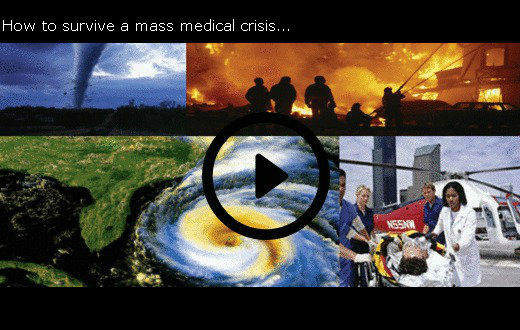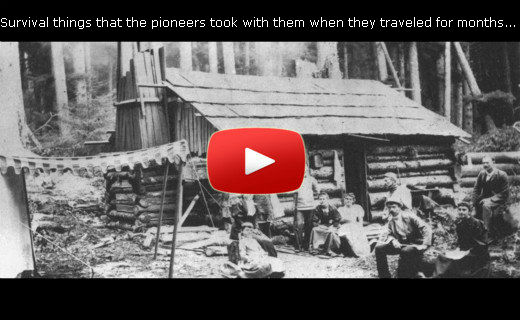You are at work. You are 60 miles from your home and have one major obstacle (river) in between your house and work. Your work location is an office cubicle with a couple of file cabinets and a desk in a mid-sized city and you work on the second floor of the building. Your home is on 8 acres in a rural location about 30 miles outside of the closest urban built up area and there is a major city about 1 hour away that does not affect your routes home but can become an issue if the overall situation worsens. Choose any crisis situation, EMP, Civil Disturbance, Riots, Major Natural Disaster or total collapse. It does not really matter what happens, but you need to get home as fast as you can due to the deteriorating situation. The power is out at your office and people begin panicking.
You gather your level 2 kit (Get Home Bag) from under your desk. Double check that you have your Level 1 kit (EDC) on your person and you make your way to your Toyota 4Runner out in the employee parking lot. It is on the ground level of a parking garage attached to your building. You arrive at your vehicle and place your GHB (Level 2) behind your seat on the floor. You open the back of your vehicle and get some water and food to place up in front for the drive home which you think will be longer due to the traffic and detours. You also do a quick visual check of your Level 4 kit (Vehicle) you have in a small action packer container. Also, inside your rear cargo area is a tool kit with repair items for tires, hoses etc. Including an air compressor, extra tie downs (ratchet straps and 1 inch tubular nylon), a case of bottle water, another smaller container (food) with protein bars, tuna fish packets, etc. You added some tools to your kit in the last few weeks, a set of bolt cutters (small and large) and a Stanley fat max utility bar. On the back of your SUV you have a spare tire with 1 x 5 gallon fuel can.
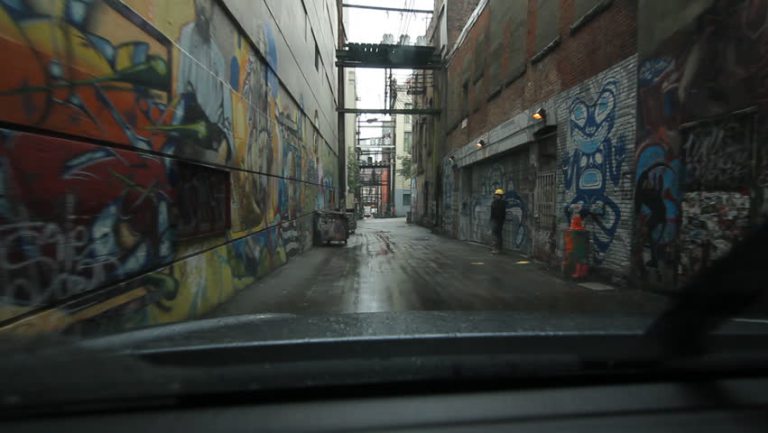
Your Get Home Scenario Begins
As you start your SUV and prepare to drive out of the parking garage you realize that everyone is trying to exit and there is a small traffic jam on the first floor. You adjust your planned exit to use the entrance instead and it looks like some already have done the same since the drop arm barrier is broken off. You exit the garage and begin to take the most unused side streets to make your way north out of the city. Lucky for you it is not too far until you will have a couple of route options for the drive home. Since you planned your routes based off your Area Study you did when you moved out in the country, you are prepared. You have your Garmin GPS working along with a good city map and compass to keep you going in the right direction as you make detours to avoid being stuck in congestion. You decide to take a risk and use an unknown alleyway between two tall buildings. You take it cautiously, as it makes a left hand turn and you realize that the way is blocked by a 7 foot wooden fence just short of an empty side street. You stop and cut the engine, look and listen for a few minutes. Exit your vehicle, you get out your Fatmax utility bar and a folding handsaw, move to the fence. You pry off the 1 x 6 sturdy boards that make up the fence and cut the cross 2×4’s and the 4×4 post supporting them. You don’t want to pound on them to attract unwanted individuals or ram through it with your vehicle and maybe damaging your radiator. You know the width of your SUV and in 5-10 minutes of prying and cutting you have an opening. You exit the alleyway onto this side street which is on the outskirts of the city but you still need to go north to get closer to home.
You look at your map and make a decision to get away from the city as soon as possible but it will take you a little out of your way from your planned routes. So you adjust your plan accordingly. You need to make a security halt and do a good map check, so the first chance you find a concealed location in the country you take an old logging road that is overgrown and pull off into the trees. Again you look and listen after you turn off you SUV. You get out and do a quick look around your immediate area. Now you need to plan another route to one of your planned routes home. You noticed there is a power line easement that will lead you to the rail road tracks and the train bridge that crosses that river on your primary route. Good, so now you take a look at your vehicle to make it is good, tires, no leaks etc. While drinking some water and eating a protein bar you make marks on your map as reference points. You then take a quick look down the logging road where you came and are going to make sure no one is there, then start your SUV and head north to that power line easement.
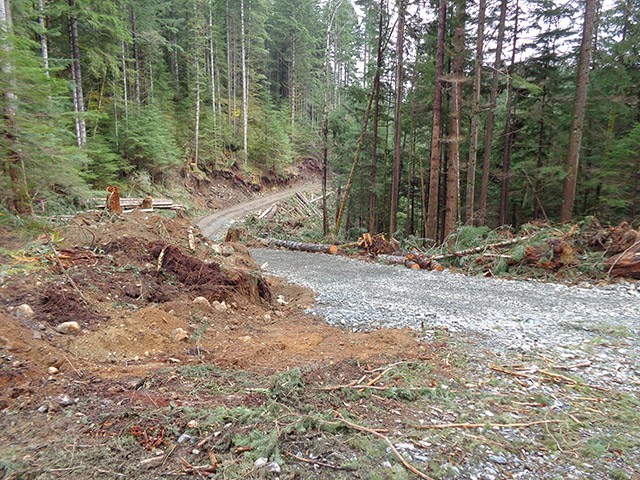 As you come closer to the easement you decide to drive slower and through the woods to enter the easement not at a known junction just in case people are in that area. As you are driving through the pinewoods you hear an audible pop and stop. You noticed that you have a puncture in your tire now. It is a solid stick poking into the sidewall near the tread. You shut off the engine and look and listen. You get out the air compressor and tire kit and plug the hole with 2 large plugs. You add air to the tire and continue on your way. Since the easement can be a natural line of drift for people walking or even driving like yourself, you take precautions by stopping before this danger area and taking a look. It looks clear and you are hoping most people are still stuck in the city or on the roads. You drive more aggressively along the established dirt road along the power lines. This road has been used by the power company’s maintenance vehicles so it is some what maintained. You notice you have to cross a hardball paved road up ahead, so you take the necessary security precautions. But as you approach the paved road on foot, you noticed it has a cable across the dirt road on both sides of the hardball road. This cable is attached to wooden posts and prevents you from easily bypassing it. So when you return to your vehicle you get out your large bolt cutters and have them ready. You cut the cables on both sides of the paved road before you cross it with your SUV. You again drive aggressively to make as much distance you can from that paved road.
As you come closer to the easement you decide to drive slower and through the woods to enter the easement not at a known junction just in case people are in that area. As you are driving through the pinewoods you hear an audible pop and stop. You noticed that you have a puncture in your tire now. It is a solid stick poking into the sidewall near the tread. You shut off the engine and look and listen. You get out the air compressor and tire kit and plug the hole with 2 large plugs. You add air to the tire and continue on your way. Since the easement can be a natural line of drift for people walking or even driving like yourself, you take precautions by stopping before this danger area and taking a look. It looks clear and you are hoping most people are still stuck in the city or on the roads. You drive more aggressively along the established dirt road along the power lines. This road has been used by the power company’s maintenance vehicles so it is some what maintained. You notice you have to cross a hardball paved road up ahead, so you take the necessary security precautions. But as you approach the paved road on foot, you noticed it has a cable across the dirt road on both sides of the hardball road. This cable is attached to wooden posts and prevents you from easily bypassing it. So when you return to your vehicle you get out your large bolt cutters and have them ready. You cut the cables on both sides of the paved road before you cross it with your SUV. You again drive aggressively to make as much distance you can from that paved road.
You approach the railroad tracks cautiously and move up to where you can see the train bridge. You use your binoculars to see the other side and notice it is identical to this side. No obstacles to prevent you from driving across it. You scan the area for people or threats. None, so you adjust your vehicle straddling the left track and drive across the bridge. Once on the other side you look in your rear view mirror and noticed some movement in the trees behind you. All of a sudden your back window is shattered as you hear several gun shots. You drop off the tracks onto the side of the railroad embankment to avoid more rounds. You see an opening in the trees on your side of the tracks and noticed it is another dirt road. You immediately turn left onto it and drive fast to put distance between you and the ambushers. You also try to maintain your location on the GPS and map. It seems you are now in one of the many state game lands that stretch between your work and home.
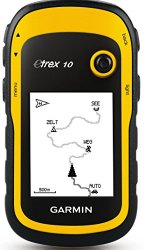
Garmin eTrex 10 Worldwide Handheld GPS Navigator
Your vehicle is having issues and you realize your fuel is almost empty. So you turn off the dirt road and pull up in a security halt and take a look at it. You come to the conclusion that a round pierced your fuel tank. As you look through your Level 4 gear and repair tools you realize you don’t have a plastic fuel tank repair kit yet. So you begin to improvise a plug out one of the thick branches, but no luck. You take in your situation by determining your location and the distance to home. You realize it should take you until tomorrow night to get home if you have to walk. So you begin to prioritize your gear/kit. You have your Level 1, your Level 2 (GHB) and your Level 4 (vehicle). You know need to take items from your Level 4 kit to augment your Level 1 and 2 Kit. You adjust the items in your GHB to accommodate the extra items from the Level 4. Primarily food and water, then Medical and Technical. You also take into account that there is a threat to your rear and want to make sure you have the extra mags for your EDC pistol. As you are getting this all together, you hear noises and movement back on the road where you turned off. So you expedite your departure from your vehicle. You move out quietly but rapidly to continue to put distance between you and the ambushers. You regret leaving your vehicle and some gear back there to be found but your family is the priority and you have extra gear at the house.
Related: GPS is Helpful; Knowing how to use a Compass & Map Can be a Lifesaver
As you move, you look for a good defensible hole up site to work out your routes. You find a thickly vegetated knoll above a draw you just crossed and decide to hole up here for a short rest. As you look at your Garmin Etrex you pulled out of your GHB and the USGS Topo maps you packed in it, you calculate you have little over 30 kilometers to home. You know you can walk 4 MPH on dirt roads with 50 lbs, so if you did this walk accordingly, it would take you 5 hours on a straight line. But this is not on a road and it is not a straight path. When you include the possible threats and known threats you have to reduce your speed, move slower, take more security halts, use different directions, etc. You look at the time and it will be about to be dusk or EENT (Early Evening Nautical Twilight). As you plan the route, you know you can stay off any roads and natural lines of drift from here on out. You determine you should be home after dark tomorrow night. You check your signal devices in your GHB, you have a section of VS-17 Panel, a strobe light with IR cover, GMRS radio with extra batteries, Red lens flashlight and your cell phone. You already made your initial text to the wife when you departed from work. She received it and marked the time you departed. Knowing your plan and how long it should take to drive, she would expect you to be home in a couple of hours. But that is not going to happen. You try another text to update on your movement plans, but no signal. You are too far to use the GMRS so you turn them off and save the batteries. She knows to begin checking the cell phone and radio on the hour for 15 minutes once you fail to make your arrival time. You continue to move toward home.
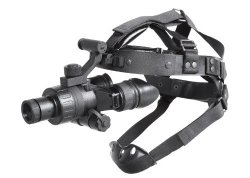
Armasight Nyx7-ID Gen 2+ Night Vision Goggles
You pick up and move out to the north avoiding all danger areas as much as possible. For the first couple of legs you do extensive counter tracking to make sure the ambushers do not follow your route. It is pretty dark tonight since the illumination is low. The moon is waxing so it will increase each night. You planned your route using as many hand rails as possible. Making sure you establish a good attack point and backstop for your RON positions. You arrive at your first RON position just after midnight, it took you about 6 hours to move almost 4 miles closer to home. You moved at a tactical pace of 1 kph through the woods under the cover of darkness. You hole up for the night and plan on moving out before first light. You have about 16 more miles to get home and you want to get there in just as many hours. At a pace of 1 kph you know you won’t be able to make that distance in 16 hours, so you plan on moving at a faster pace for part of your movement tomorrow.
It is 4 a.m. And you are ready to move out before it gets light. You replenished your water last night from a small creek about 300 meters from your hole up site. You travel the rest of the day without any more problems from people or terrain. You managed to gain time on your route by using handrails along a railroad track that was heading in your direction. You made sure you stayed off the tracks a good 100 meters but maintained visual of it as you moved rapidly through easy terrain with less under brush. It is getting dark now and you know you are a few miles from your house. So you stop in a security halt and try to establish communications with your wife, your cell is not working still so you give the GMRS a try. You broadcast a couple of times at the top of the hour. You wait and hear her respond and you let her know how far you are out, from what direction you are coming and that you will give here a night-time signal for link up. She acknowledges it all. As you approach the clearing that is behind your house, you observe it for anything unusual. Seeing it is clear, you turn on your radio and establish common again with her. Your primary night-time signal, an IR strobe light for her to acknowledge. You have one set of NVGs and she has them at the house. You wait for her to acknowledge what she sees. But nothing….So you switch to the Alternate, a red lens flash light with 3 flashes. She sees that and comes across the radio with what she sees. You confirm and you arrive at your door. After the greetings, you realize you never taught your wife how to turn on the NVGs. But she defiantly knew the alternate signals.
Conclusion: As I try to detail in this scenario, you must have a flexible plan. Be prepared to change and adjust it according to the situation. Your kit levels aid you in maintaining the flexibility and ability to adjust and resupply on the go. Continue to maintain forward progress and avoid having to double back unless you have no other choice. You are dealing with time, distance and contingencies so having a good PACE plan to help you is crucial. The other part I try to emphasis is not everything goes according to your plan. If you rely on other people in your plan, make sure they know and understand it thoroughly. When it comes to special equipment, make sure everyone knows how to use it. Las note I want to make, ensure you cover all possibilities with your vehicle. Now some things you won’t be able to fix, but leaks, hoses, fan belts, etc are fixable on the road if you have the right things on hand.
source: The Prepper Journal




